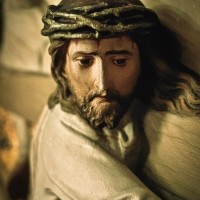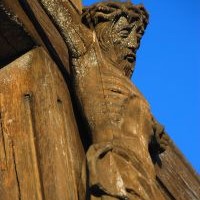While other religions exist on earth, none is more popular than Christianity. About one third of all humans are Christians. Yet something else is distinctive about the faith. In all other religions you “do” something for salvation. You must be good, keep enough laws, or satisfy certain requirements. The pressure of saving yourself is on [&hellip
Since we don’t just die and cease to exist, answering the question, “Who was Jesus?” is one with eternal consequences. The great Christian apologist, professor, and author C. S. Lewis developed the “Lord, Liar, or Lunatic” trilemma to get people to think through this issue of Jesus’ identity. Lewis wrote, “I am trying here to [&hellip
Listen to Jesus Himself deal with this issue of our destiny—what will happen when we die. In John 11:25-27, speaking to Martha at the grave of her brother Lazarus, Jesus said, “‘I am the resurrection and the life. He who believes in me will live, even though he dies; and whoever lives and believes in [&hellip
We’ve already seen that the Bible is a reliable document, accurately copied and transmitted through the centuries. Armed with this information, what can we know about that first Good Friday and Easter Sunday? Jesus did die; there is sufficient evidence for that both inside and outside of the Bible. Jesus’ tomb was indeed empty; His [&hellip
Besides the fact that many people saw Jesus alive after the resurrection, there was physical interaction with Him. Thomas touched Jesus’ nail-pierced hands and spear-torn side in John 20:24-28. “Now Thomas (called Didymus), one of the Twelve, was not with the disciples when Jesus came. So the other disciples told him, ‘We have seen the [&hellip
A third theory to address Christ’s resurrection is the hallucination theory. It proposes that the disciples thought they saw Jesus alive; in other words, that it was all just an illusion or a figment of their imagination. There are a number of problems with this theory. Normally, hallucinations are rare, and caused by drugs or [&hellip
Exploring the theft theory to explain the Resurrection yields other interesting developments. For instance, this theory states that the disciples stole the body while the Roman guards slept. This doesn’t make sense because to actually fall asleep while on watch meant the death penalty for Roman soldiers. That’s why the chief priests and elders devised [&hellip
Another theory to explain away the resurrection of Jesus is the theft theory. In this scenario, Jesus’ disciples stole His body, hid the corpse, and proclaimed to everyone that He was miraculously alive. This theory is actually as old as the resurrection itself; it is recorded in the Bible in Matthew 28:11-15: “While the women [&hellip
Some don’t believe that Jesus rose from the dead because He didn’t die on the cross in the first place. Does the swoon theory, that Jesus didn’t die but passed out on the cross, explain the Resurrection? The biggest objection to the swoon theory is the fact that Jesus had been pierced in the heart [&hellip
Some people contend that Jesus did not rise from the dead. Skeptics continue to develop explanations on what really happened, even though they lived mant years after Christ. Karl Venturini, at the beginning of the nineteenth century, suggested the “swoon theory.” The swoon theory says that Jesus swooned, or fainted, on the cross, but did not [&hellip



















0
Comments
Add